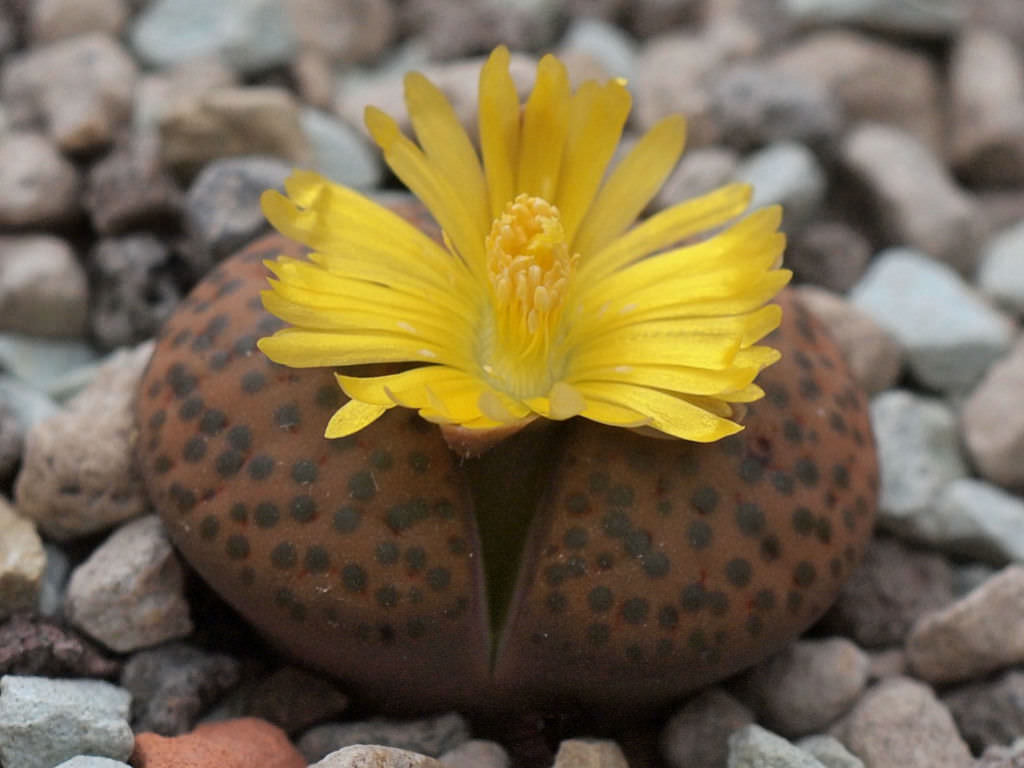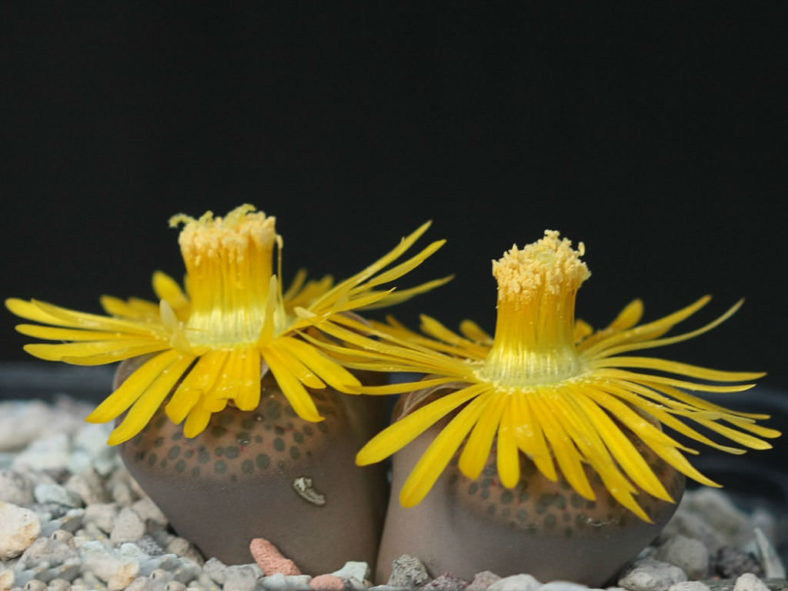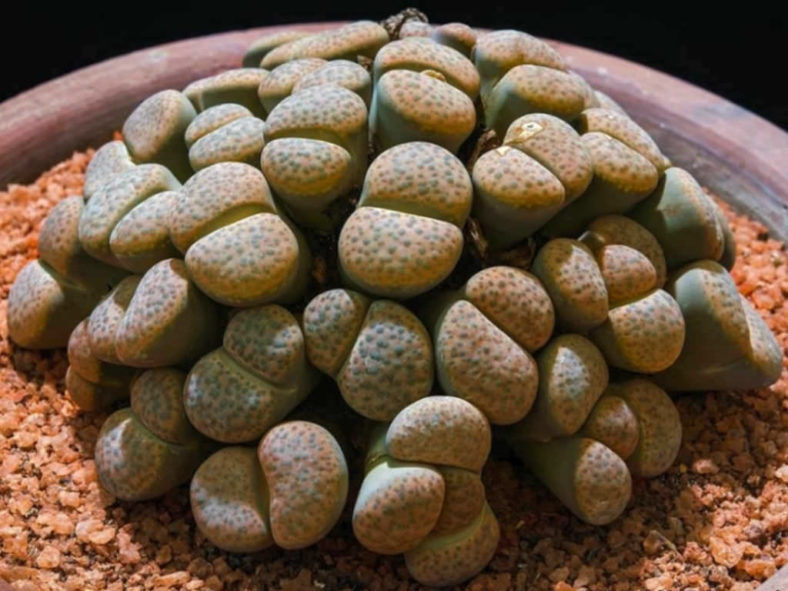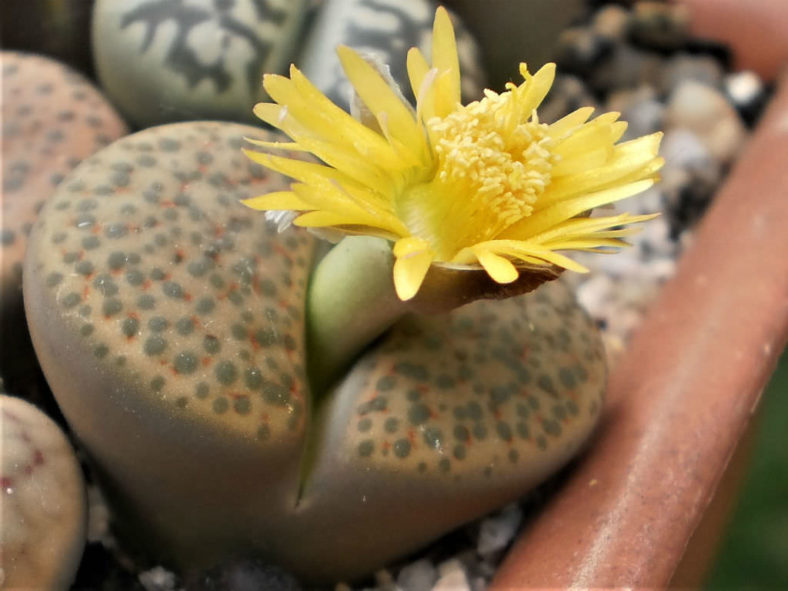Scientific Name
Lithops fulviceps (N. E. Br.) N. E. Br.
Synonym(s)
Lithops fulviceps var. fulviceps, Mesembryanthemum fulviceps
Common Name(s)
Golden Living Stones, Yellow Living Stones, Tawny Head Living Stones
Scientific Classification
Family: Aizoaceae
Subfamily: Ruschioideae
Tribe: Ruschieae
Genus: Lithops
Etymology
The specific epithet "fulviceps (FUL-vih-keps)" means "fulvous-headed" and refers to the color of the plant bodies.
Origin
Lithops fulviceps is native to Namibia and South Africa (Northern Cape). It grows in rocky areas and cold desert regions.
Description
Lithops fulviceps is a small succulent with a body that consists of a pair of thick, fleshy leaves ranging in color from red-brown, yellow-brown, gray-brown to gray with greenish or pinkish tinges. The body can grow up to 1.6 inches (4 cm) tall and 4 inches (2.5 cm) wide. The top surface of the leaves is flattened with many dark gray-green to blue-green, slightly raised dots and sometimes with yellow, orange-brown, or red markings. The older plants form clumps of up to 10 ten bodies.
The flowers are yellow, appear in fall from the fissure between the leaves, and can reach up to 1.4 inches (3.5 cm) in diameter.

How to Grow and Care for Lithops fulviceps
Light: Lithops have adapted to intense sunlight in the wild, so they require a good amount of direct sunlight when grown indoors.
Soil: These plants thrive best in a growing medium that will drain quickly. Use a commercial succulent soil mix, or make your own.
Hardiness: Lithops fulviceps can withstand temperatures as low as 30 to 50 °F (-1.1 to 10 °C), USDA hardiness zones 10a to 11b.
Watering: Lithops have a specific yearly growth cycle, and it is important to water only during certain stages, but it is also important to keep the soil dry at other stages of their growth. Never water Lithops deeply when they are dormant.
Fertilizing: These succulents do not need to be fertilized. Lithops will thrive without any feeding. If you decide to feed, use a fertilizer with high potassium and low nitrogen levels.
Repotting: Lithops will happily stay in the same pot for several decades. The common reason for repotting is to divide the plants or allow space for clusters to grow.
Propagation: Lithops can be propagated by division if you have multi-headed plants. They are most often grown from seeds.
Learn more at How to Grow and Care for Lithops.
Toxicity of Lithops fulviceps
Lithops are non-toxic and safe to have around children and pets.
Cultivars of Lithops fulviceps
Links
- Back to genus Lithops
- Succupedia: Browse succulents by Scientific Name, Common Name, Genus, Family, USDA Hardiness Zone, Origin, or cacti by Genus
Photo Gallery
Click on a photo to see a larger version.


